Crime can happen anywhere, at any time. From home invasions to break-ins at work, the possibility of being in a violent situation is always present.
Incidents can take place in a wide variety of settings, from homes to public places like hospitals and schools. It is crucial to take steps to protect yourself, your loved ones, and your property from potential security threats. One effective security measure is DoorJammer, a portable door security device designed to prevent forced entry and unauthorized access. By providing additional protection, DoorJammer can help ensure your peace of mind and prevent potential security incidents.
In this piece, we’re going to look at key crime statistics across a wide range of scenarios and discuss how DoorJammer can give peace of mind, wherever, and whenever.

Residential Homes, Apartments, Or Dorm Rooms
- In 2020, there were an estimated 1.2 million violent crimes in the United States, including murder, rape, robbery, and aggravated assault, according to the Federal Bureau of Investigation. While this represents a decrease from previous years, it is still a significant number of violent crimes (Source).
- Home burglaries occur every 15 seconds in the US. This means that every day, thousands of homes across the country are broken into, resulting in significant financial losses for homeowners and emotional trauma for victims (Source).
- According to the ADT, 34% of burglars enter through the front door of a home. This is a surprising fact, as many people assume that burglars would be more likely to enter through a window or other less conspicuous means. But, more often than not, they take the easiest route, as it’s much quicker (Source).
- Despite the high frequency of home burglaries, only 17% of homes in the US have a security system in place.This leaves a staggering 83% completely at the mercy of criminals(Source).
- Most burglaries occur during the daytime when residents are away. This is often when burglars think it’s more likely the home will be empty, and they can enter and leave undetected. This is true in most cases, as people leave for work early in the morning and aren’t home until evening (Source).
- Renters are more likely to be burglarized than homeowners, as the Insurance Information Institute reported. This is because renters are usually reluctant to invest in security measures such as home security systems, making their properties more vulnerable to break-ins (Source).
- Approximately 55.7% of burglars use forcible entry to access a home. Understandably, it’s the most convenient method requiring no extra tools, and if the house is security-compromised and there’s an old door or a shaky-looking window, they will pry it open (Source).
- Homes with no security measures in place are 300% more likely to be targeted by burglars, according to Safehome.org. But if you did employ certain measures, they’re not foolproof, as some criminals are more skilled than others. In these cases, security systems can only delay or even make them reconsider, serving as a visual deterrent (Source).
- According to the FBI, the average burglary lasts between 90 seconds and 12 minutes. Most criminals work extremely fast and devise elaborate plans before breaking in and, thus, know precisely where you’re hiding your valuables (Source).
- More than half of all burglaries occur in residential areas. The traffic isn’t exceptionally high, and most residents leave for work early in the morning, allowing criminals to freely move around and finish the robbery just in time to get out (Source).
DoorJammer provides a solution to the vulnerabilities that homeowners and renters face in their homes. By providing an extra layer of security for doors, DoorJammer can help prevent burglars from gaining entry. The device is easy to install and can be used with other security measures to create a comprehensive security plan for the home.
DoorJammer is adjustable and can fit various door types and sizes, making it a versatile security option for different living situations. It provides a visual deterrent to potential intruders and can enhance peace of mind for those who live alone or are vulnerable to crime.
For renters, who may not have the ability to install a security system without the owner’s permission or financial resources, DoorJammer is a cost-effective way to improve their security. By providing an added layer of protection, DoorJammer can help renters feel more secure in their homes.
Overall, DoorJammer offers a simple yet effective solution to the risks associated with home burglaries. Its easy installation, versatility, and affordability make it a valuable addition to any home security plan.

Schools And Public Buildings
- Each day in the United States, 12 children die from gun violence, and another 32 are shot and injured. Firearm deaths occur at a rate more than five times higher than drownings (Source).
- Guns are the leading cause of death among American children and teens. Firearms account for 29% of all deaths among children and are the next leading cause of death after motor vehicle accidents (Source).
- Since the Columbine shooting in 1999, more than 187,000 students in the United States have experienced gun violence at school. The number of students who experienced gun violence at school has increased recently, with more than 40,000 students exposed in the 2018-2019 school year alone (Source).
- In 2021, there were more school shootings than in any year since Columbine, with a total of 686 incidents reported. And although the number of incidents decreased by 2021, they were still as numerous (636) (Source).
- Nearly half of all parents with a weapon in the home wrongly believe their children don’t know where a gun is stored. This, however, couldn’t be further from the truth as at least 22% percent of children do, and, thus, could easily have access to them (Source).
- An estimated 4.6 million American children live in a home where at least one gun is kept loaded. And, with the previous fact in mind, it only shows that if a child decides to commit acts of violence, it’s likely to go unnoticed by the parents and police alike (Source).
- An astonishing number of shooters plan the attack in advance. A comprehensive school shooting study by the Secret Service and Department of Education found that this was true in 93% of cases.
- In 4 out of 5 school shootings, at least one other person knew the attacker’s plan but failed to report it. In 75% of incidents, at least one person, usually a friend from school, knew something horrible would happen but was too scared to tell or didn’t think the person could possibly do it (Source).
- But the most alarming thing is that schools are highly vulnerable to security breaches. They are open to the public, easily accessible, and, unfortunately, are soft targets for criminal activity (Source).
- Hence, implementing security measures in public buildings can help prevent and respond to security threats. This includes surveillance systems, access controls, and emergency response plans. Public building owners and managers can help reduce the risk of security breaches and respond quickly and effectively to any threats by taking proactive steps to improve security (Source).
From access control systems to surveillance cameras and trained security personnel, these measures can help ensure the safety of those inside the building. And that’s where DoorJammer comes in – as an extra layer of security, it can provide peace of mind and help keep potential intruders out. With its easy-to-use design and sturdy construction, DoorJammer can quickly and effectively barricade doors, making it more difficult for someone to gain entry. And you can also easily remove it with the help of the quick-release function by performing a simple upward-pulling motion.
However, if you desire to be even safer in a school emergency, you can opt for DoorJammer Lockdown. It withstands even more external pressure than the regular version and is made from stronger materials, providing a much stronger barrier and preventing any harm from coming your way.
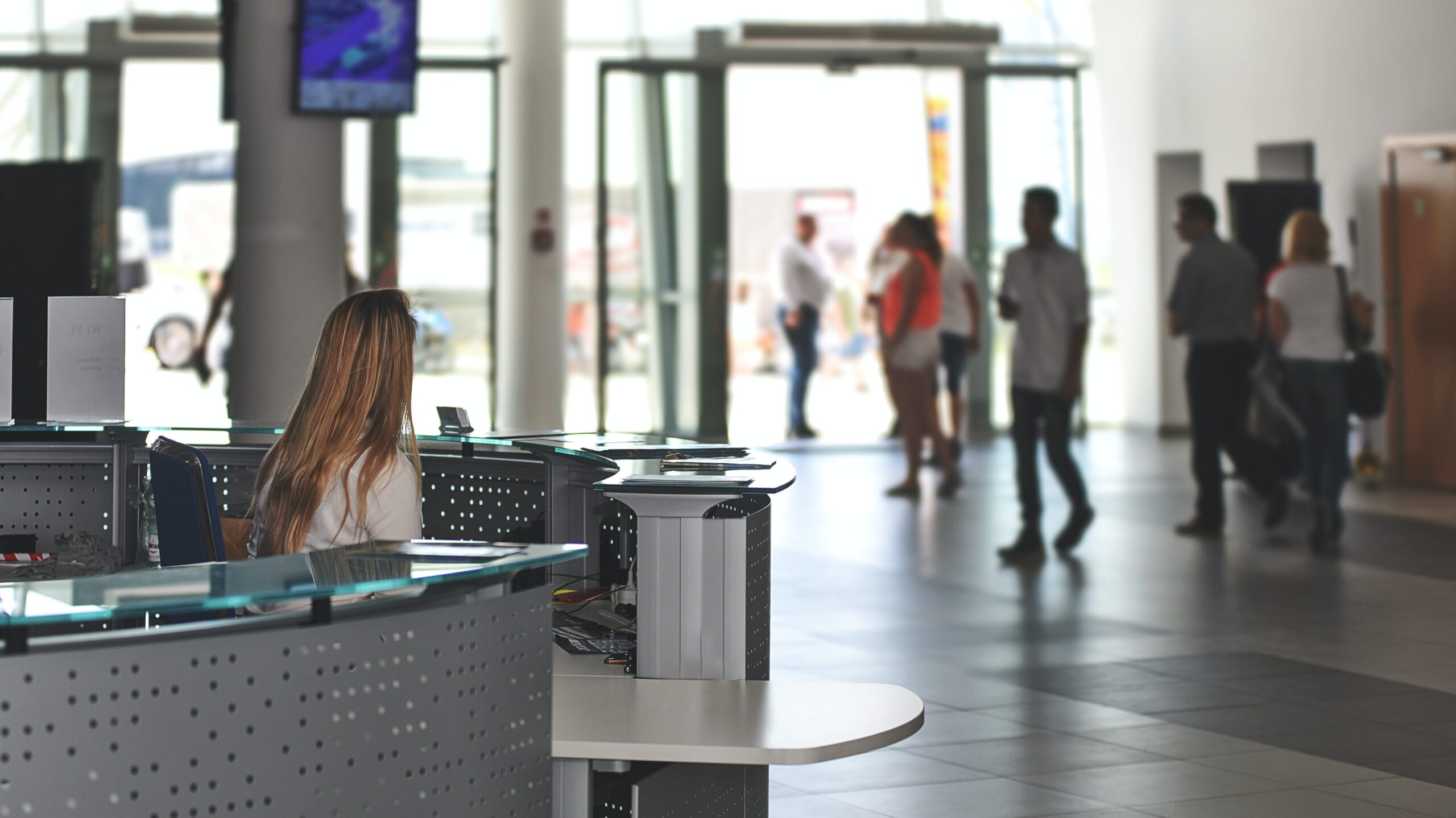
Offices And Commercial Settings
- Commercial businesses are at a higher risk of theft, burglary, and vandalism than residential properties. According to the National Crime Victimization Survey, in 2019, 21.3% of all property crimes occurred at commercial locations, while only 15.5% occurred at residential locations (Source).
- The employee theft cost in the US is estimated to be over $50 billion per year. This figure includes the costs of property loss, insurance, medical expenses, legal fees, and decreased productivity and employee morale (Source).
- Employee theft significantly contributes to workplace crime, accounting for 75% of reported incidents. It includes cash, merchandise, intellectual property theft, embezzlement, and fraud (Source).
- The majority of workplace thefts go unreported or undetected. According to a study by the Association of Certified Fraud Examiners, only 13% of occupational fraud cases are detected by management review, while 40% are detected through tips (Source).
- Convenience stores around a large metropolitan area in the US had a 77% increase in the odds of experiencing violent crime if surrounded by vacant land compared to those surrounded by open commercial land. Simply put, crime is more likely in such areas because unoccupied property makes it easier for criminals to hide and reduces the store’s visibility to law enforcement (Source).
- Retail locations that operate for 24 hours have more than double the odds of experiencing violent injury compared to those that do not operate 24 hours. The main causes are likely to be low staffing levels and the sale of alcohol, which are pretty challenging to avoid (Source).
- A comprehensive examination of violent crimes in Atlanta has identified that all property types had outlier establishments experiencing elevated counts of violent crimes. This includes properties used for education, healthcare, and even recreation, with only 288 reported incidents for offices (Source).
- Workplace violence is a serious issue, with an average of two million workers experiencing violence yearly. It includes physical violence, verbal abuse, threats, and harassment. The Occupational Safety and Health Administration (OSHA) has identified workplace violence as a significant occupational hazard (Source).
- Many businesses still need an emergency response plan to address security threats like active shooters or natural disasters. And according to a National Small Business Association survey, only 20% of small businesses did put it in place (Source).
- Security measures can improve employee morale and customer trust, leading to increased business success. A survey by the National Retail Federation found that 70% of retailers believe that security measures such as CCTV and security guards positively impact their bottom line. Additionally, employees who feel safe and secure are more likely to be productive and engaged (Source).
In the case of workplace crime, DoorJammer can prevent employee theft by restricting access to areas where valuable items are stored. It can also serve as a deterrent for potential thieves by making gaining entry into the premises more difficult.
DoorJammer can help businesses located in high-risk areas by providing additional security to their doors. This can deter potential attackers and prevent them from gaining entry into the premises.
Furthermore, in an emergency, DoorJammer can be a crucial tool for emergency response plans. By securing doors during an active shooter or natural disaster situation, this device can prevent the attacker or the natural elements from entering the premises and harming employees and customers.
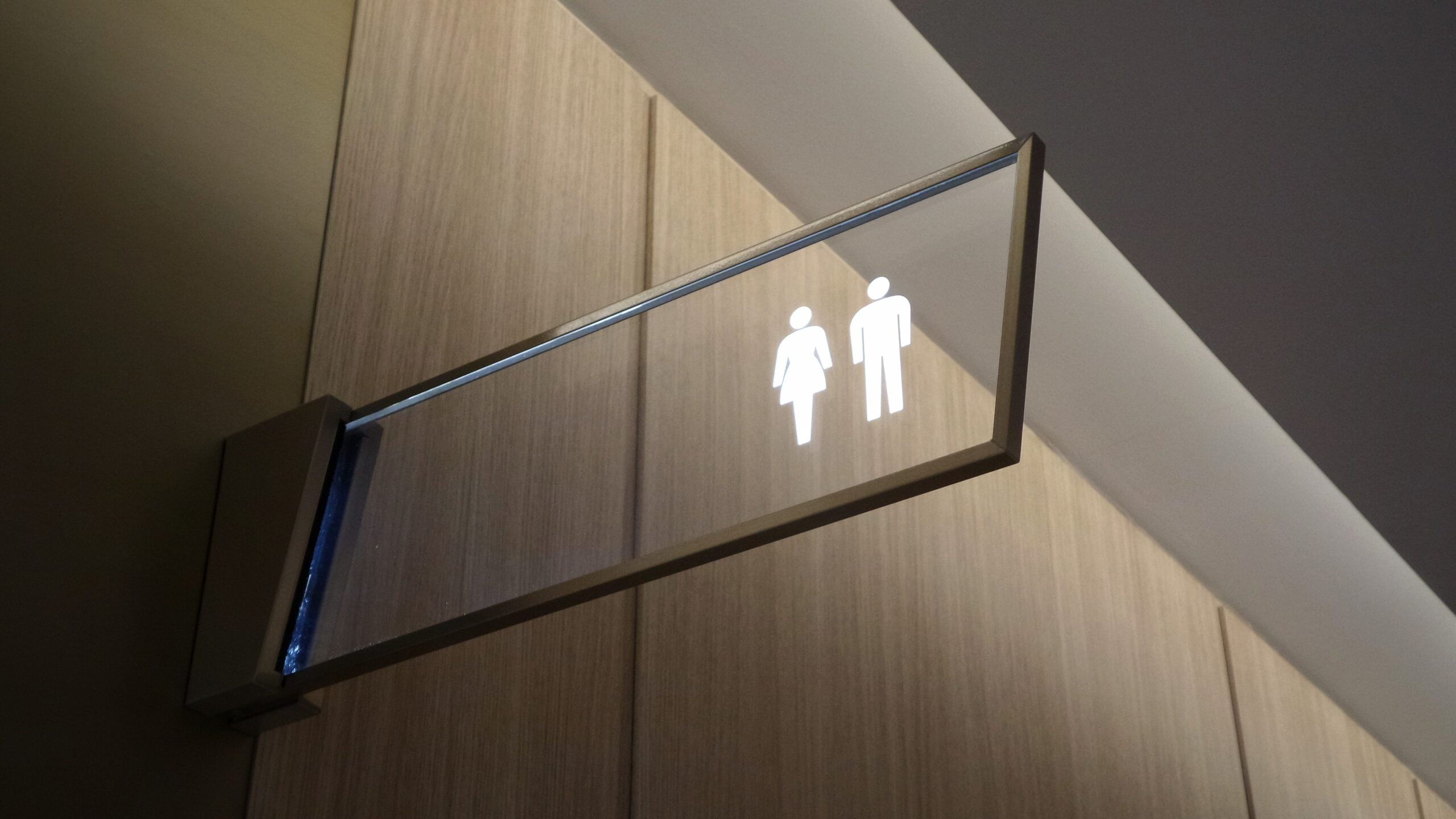
Privacy In Public Or Private Areas
- Privacy in restrooms and changing areas is crucial for personal security and privacy. It’s true when considering vulnerable groups such as women, children, and people with disabilities. Privacy, especially when supplemented with security measures, can also prevent incidents of voyeurism or other types of sexual harassment (Source).
- Incidents of sexual assault and harassment are more likely to occur in private areas such as restrooms and changing rooms. According to Women Sexual Assault Center, 79% of incidents occur at or near the victim’s home, and 21% occur in a public area. Often, the perpetrator is known to the victim, such as a coworker, friend, or family member (Source).
- Women and girls are disproportionately affected by sexual violence in restrooms and changing areas. According to National Sexual Violence Resource Center statistics, women are more likely to be targeted for sexual assault and harassment than men. (Source)
- Many public restrooms and changing areas do not have adequate security measures in place. It can include poor lighting, lack of surveillance cameras, and insufficient locks on restroom stalls or changing room doors. This can leave individuals vulnerable to assault or harassment (Source).
- The fear of sexual violence can prevent people from using public restrooms and changing areas. And this is undoubtedly the case in states like North Carolina, where an HB2 law was passed and banned people from using bathrooms that don’t match the sex indicated on their birth certificates (Source).
- According to a survey conducted by Stop Street Harassment, 81% of women in the US have experienced sexual harassment or assault in their lifetime, with 66% reporting such incidents in public areas. And changing rooms and public restrooms certainly fall under the category of “public”(Source).
- A study by the CDC found that nearly 1 in 10 high school students in the US had experienced sexual violence in a dating relationship. Many of these incidents occur in school restrooms (Source).
- A survey by the Pew Research Center found that 64% of US adults have experienced some form of data theft or unauthorized access to their personal information. The most frequent cause was leaving their belongings, like phones or laptops, unattended (Source).
- That’s why businesses and organizations are responsible for ensuring their patrons’ safety and security in restrooms and changing areas. This can include implementing security measures such as surveillance cameras, providing adequate lighting, and regularly checking for security vulnerabilities. It can also involve educating employees on how to prevent and respond to incidents of sexual violence and harassment in these spaces (Source).
- A National Retail Federation survey shows that more organizations implement sophisticated security measures, with 38.6% planning to use RFID systems and 29.8% – AI-based POS/SCO video analytics. It shows the demand for security both on the customers’ and retailers’ sides (Source).
However, it’s also possible to use DoorJammer in such a scenario. The device is easy to install and use, making it a practical solution for enhancing security in restrooms and changing areas. It is portable and can be carried in a bag or purse, making it convenient for individuals to use in public restrooms or changing rooms when they feel unsafe. DoorJammer is also adjustable, can fit most door types, and can be removed with a pulling upward motion due to its inbuilt quick-release function.
But, as maintaining privacy can prove challenging, why not opt for a sturdier solution? DoorJammer Lockdown is a much larger version of the regular one, albeit with the ability to withstand more external pressure and provide a much stronger barrier. However, despite its size, it’s just as versatile and only improves upon the standard design.
Overall, by investing in DoorJammer, businesses and organizations can demonstrate their commitment to ensuring the safety and security of their patrons. With their simple yet effective design, both DoorJammer versions can give individuals the peace of mind to use public restrooms and changing areas without fear of violence or data theft.

Forced Entry In Emergencies And Natural Disasters
- According to an article by Scholars Strategy Resource, counts of violent domestic cases increase exponentially during a natural disaster, and poor socioeconomic conditions in some districts can significantly increase the likelihood of looting (Source).
- During Hurricane Katrina, there were multiple reported cases of looting and burglary in New Orleans alone. The hurricane and subsequent flooding heavily impacted the city, forcing many residents to evacuate. In the chaos that ensued, many businesses and homes were looted, leading to significant losses for residents and business owners (Source).
- Similarly, after the 2010 earthquake in Haiti, which took an estimated 140,000 lives, the immediate impact of the calamity rendered law enforcement unable to respond quickly. The looters targeted businesses, homes, distribution centers, and even hospitals, with many buildings lacking adequate security measures (Source).
- The largest hurricane to ever hit the US, Hurricane Harvey, ravaged the city of Houston and many surrounding areas, leaving most areas flooded. However, even amongst the chaos, those looking to steal found opportunities to get in. They went to great lengths to achieve their goals and used boats to get the valuables (Source).
- The Tōhoku earthquake and tsunami, also known as the Great East Japan Earthquake, struck Japan on March 11, 2011. The disaster caused widespread devastation, with over 15,000 deaths and over 6,000 injuries. According to Telegraph, 95,000$ (current rate figure) worth of goods was stolen during the disaster (Source).
- In the aftermath of Hurricane Maria in Puerto Rico in 2017, the infrastructural damage left many without access to basic necessities like food and water. The ensuing chaos and desperation led to a significant breakout of criminal activity, with looters targeting practically every business, from gas stations and pharmacies to supermarkets and electronics stores. The looting was so excessive that low-income and affluent neighborhoods had the same percentage of criminal activity (Source).
- Bushfires are also a significant concern, and Australia had to deal with this horrific experience in 2019. Unfortunately, while for some, it was a tragedy, for others, it presented an opportunity. Many cases of looting were reported, with the most notable example including two looters who stole 20,000A$ worth of stock from Betta Electrical (Source).
- The Camp Fire, sparked on November 8, 2018, in Butte County, California, was one of the deadliest and most destructive wildfires in the state’s history. The fire burned for over two weeks, destroying over 18,000 structures, including homes and businesses, and causing at least 85 deaths. In the aftermath, many people returned only to find their property looted, with a staggering amount of missing valuables and ransacking reports (Source).
- However, emergencies aren’t limited to natural disasters. In 1992, riots erupted in Los Angeles after the acquittal of four police officers who were caught on video beating Rodney King, a Black man, during a traffic stop. They lasted only six days but resulted in more than 63 deaths, over 2,000 injuries, and 1 billion dollars in property damages, with many businesses looted (Source).
- Last but not least, during another horrific event, the 2005 London bombings, there were lootings and break-ins. In the aftermath of the attacks, many businesses in the affected areas were forced to close due to damage or safety concerns, leaving them vulnerable. This, undoubtedly, created high criminal activity, with the police unable to respond in time due to ensuing chaos (Source).
That’s precisely why it’s crucial to have adequate security measures in place to protect homes and businesses from forced entry and looting during emergencies and natural disasters. To this end, DoorJammer can be an effective solution as it’s portable, lightweight, and quickly installed on most doors.
With its durable design, the device withstands up to 1,000 pounds of direct force, making it difficult for intruders to break in. It can be easily installed on any standard door and removed just as quickly. In emergencies where individuals may need to evacuate immediately, DoorJammer can be easily removed and taken with them.
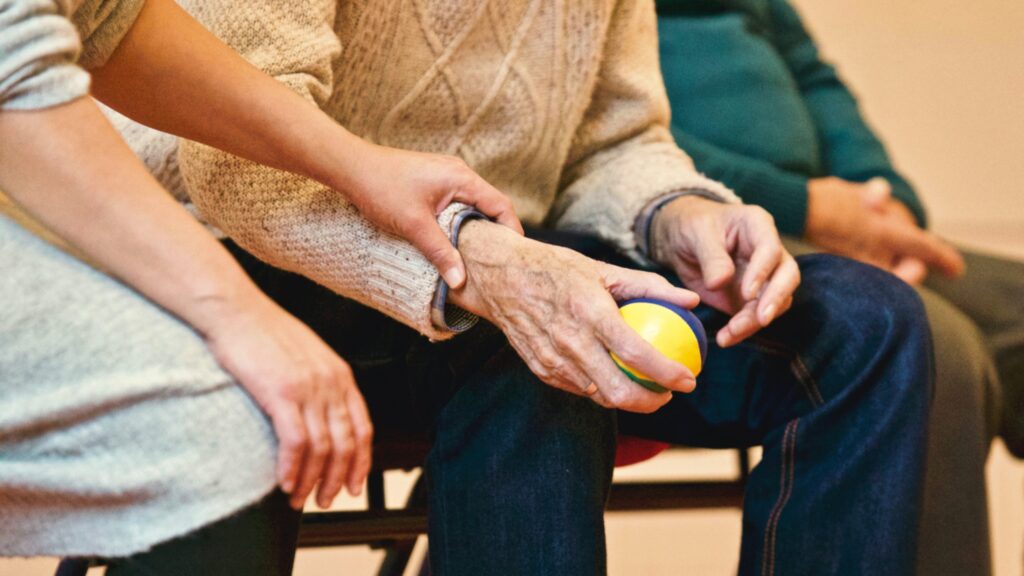
Retirement Communities And Senior Living Facilities
- According to the U.S. Department of Justice, older adults have a higher risk of experiencing crime than other age groups in the US. This is further supplemented by data and research that find senior citizens more frequent victims of fraud, scams, and financial exploitation than any other age group (Source).
- Senior living facilities are often targets for theft and burglary due to the presence of valuable medical equipment and medications. However, they often go unnoticed and unreported. (Source).
- Theft is such a severe problem in nursing homes that a 2020 article published by Pintas & Mullins dealt with many reported cases. And while one employee stole pain patches from a bed-bound patient, others forced the senior citizens to write them checks or even exploited a 100-year-old resident (Source).
- A National Center on Elder Abuse study found that 1 in 10 nursing home residents had experienced physical, sexual, and emotional abuse. And seeing as such facilities are generally considered safe harbors for senior citizens, families have nothing but worries and concerns (Source).
- According to The Columbus Dispatch, 25% of employees in 47 nursing homes in 10 states have seen fellow employees steal from the residents, and 20% of families suspected this was happening. In all instances, theft was limited to keepsakes and jewelry (Source).
- But overall, the fear of crime can lead to a reduced quality of life for older adults, resulting in social isolation and depression. Fear of crime is a significant concern among older adults and can lead to changes in behavior, such as avoiding public places and activities (Source).
- Many senior living facilities do not have adequate security measures, leaving them vulnerable to break-ins and other security threats. An article by Caitlyn-Morgan Insurance details an incident where a 94-year-old resident was sexually assaulted and even passed away shortly after. All this transpired in a facility with security cameras, which, unfortunately, didn’t work properly (Source).
- Studies have shown that security cameras and other security measures can deter crime and improve the safety of older adults in senior living facilities. A New, Your Times article presented that security cameras can reduce crime in nursing homes by up to 50% (Source).
- Staff members in senior living facilities may not have adequate training in responding to security threats, leaving residents vulnerable. Many lack training in resident rights, abuse prevention, and emergency response (Source).
- That’s why, overall, investing in security measures and emergency response plans can improve the quality of life for older adults in senior living facilities, leading to increased satisfaction and peace of mind. Multiple studies concluded that older adults living in senior living facilities with security measures in place reported feeling safer and more secure than those without such measures (Source).
However, while planning to put such security measures in place, it’s also possible to include DoorJammer as a possible solution. As most facilities usually lack the means to barricade the door in an emergency, such a device could be quickly used to secure the room. It could prevent potential physical assaults and theft, especially when the resident is out of the room or went to meet their family during a visit.
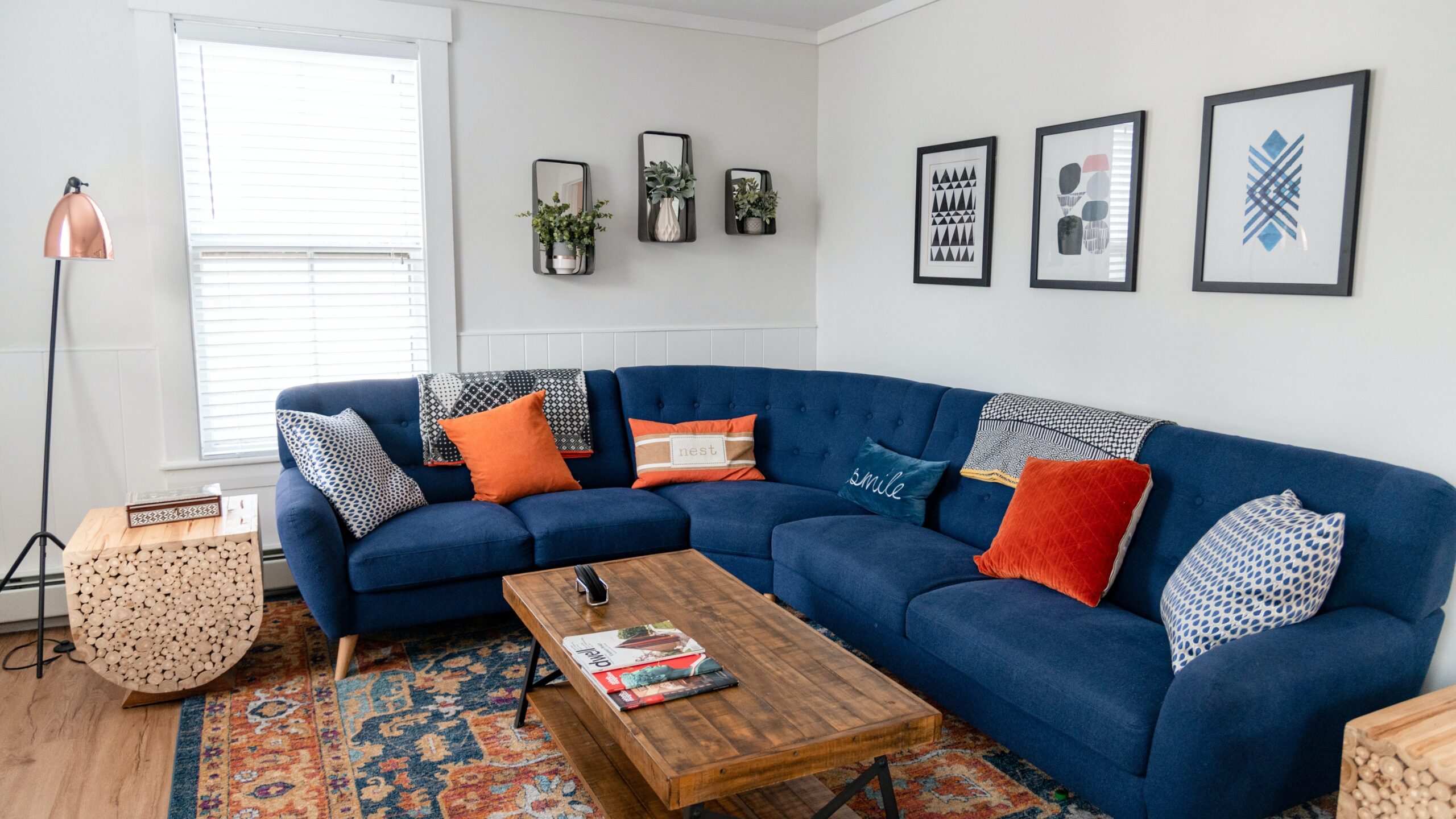
Vacation Homes Or Rental Properties
- According to The Zebra, in 66% of housing markets, it’s more cost-effective to rent a house than outright buy property. That’s why In 2016 alone, about 27% of Americans rented their houses (Source).
- Thieves and burglars often target vacation homes and rental properties due to their perceived vulnerability and the likelihood of being unoccupied for long periods. These properties can be an attractive target for criminals, as they often contain high-value items such as electronics, jewelry, and other valuables. Moreover, these properties are unoccupied for long periods, sometimes months, making it easier for burglars to break in and steal without fear of being caught (Source).
- In 2021 about 28% of renters experienced property crime compared to 27% of homeowners. Meaning there’s a real risk of a break-in (Source).
- Overall, burglaries tend to rise in summer compared to other seasons. For instance, according to a survey done by Safewise, a significant percentage (11.3%) of respondents experienced burglaries in June. And, seeing as most people like to go on vacation when it’s warm and sunny, that’s yet another concern renters have (Source).
- Vacation homes and rental properties are often located in isolated or remote areas, making them more vulnerable to break-ins and other security threats. For instance, Nex Mexico, the rural and most burglarized state in the US, has 23% of crimes comprised of burglaries alone (Source).
- Moreover, the statistics from another source, Assurant’s article on renters and security, show that 32% of renters are especially concerned about security during the summer months. However, 42% rely on basic locks, and 36% rely on their neighbors’ keen eyes (Source).
- Individuals or companies often own vacation homes and properties that rely on rental income to cover expenses and generate profits. If a rental property is in a high-crime area, the rents are generally lower to accommodate the associated risk. But what’s to say you can’t apply the same logic if the house isn’t protected, especially when it’s in an affluent neighborhood, which could easily be a potential target for theft? (Source)
- The fear of theft and security threats can deter potential renters from booking vacation homes and rental properties. This fear can be compounded by stories of break-ins and other security incidents in vacation rentals reported in the media, which can lead to a negative perception of the safety of vacation rentals among potential renters (Source).
- According to the previously mentioned article by Assurant, 54% of renters would pay more if the house had a connected security device or doorbell. Taking into account everything previously mentioned, it’s easy to see what that’d be the case (Source).
- Ensuring adequate security measures and constructing sophisticated security plans can improve the safety of vacation homes and rental properties and increase renters’ confidence in their security. This includes installing deadbolts and alarms, providing renters with safety information, and ensuring the property is well-lit and secure (Source).
And, while the owners could install all the security measures mentioned, they could also enlist the help of DoorJammer. The device can prevent forced entry scenarios, works as a visual deterrent due to the significant amount of time it may take to enter, and provides the added benefit of not damaging the floor or tripping over it. It can function perfectly fine on any type of surface, which is suitable for renters and owners and saves money on repair bills.
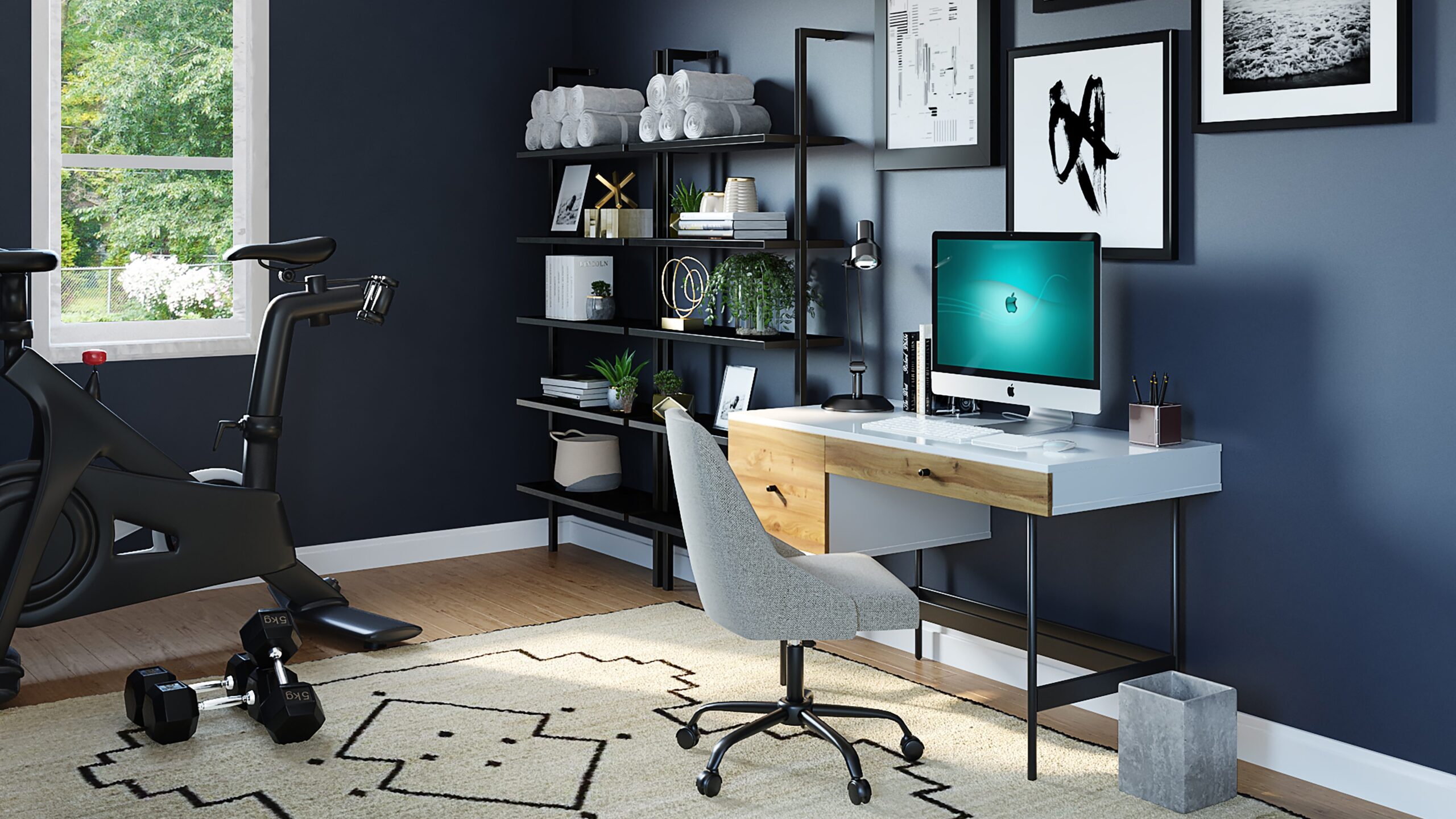
Small Businesses Or Home Offices
- According to the FBI’s 2019 Crime Statistics Report, burglary accounted for 17.1% of all property crimes in the United States. The country had an estimated 1.1 million burglaries, resulting in $3 billion in losses. These losses include stolen property, as well as property damage caused by the break-in (Source).
- Small businesses and home offices are at risk of theft and burglary due to improper security and merchandise on display. Burglars can quickly break in and access valuable items or information from these establishments, especially if they are left unsecured (Source).
- According to a CNBC article, small businesses experience unprecedented theft. One owner reported losses of around 200,000$ over three years (Source).
- It is estimated that 30% of burglars gain entry through an unlocked door or window, making it necessary to always lock doors and windows when leaving the premises. And considering most ensure only basic security measures are in place, this can surely bring about financial trouble.
- The cost of a break-in or theft in a small business or home office can be significant, including the value of the stolen items and the cost of repairs and lost income. The average cost of a break-in or theft for a small business is $8,000, which includes lost inventory, lost revenue, and property damage. The financial impact of a break-in or theft can devastate small businesses and home offices, leading to bankruptcy or closure (Source).
- Small businesses and home offices often have confidential and sensitive information that can be compromised in a break-in or theft, leading to further financial losses or legal issues. It can include financial documents, customer records, personal data, and other sensitive information. For instance, if we consider cybersecurity, a data breach’s average cost for US small businesses is around $200,000 (Source).
- 60% of small businesses fail within the first six months. However, not all of this is about data breaches and confidential information leakage. 80% of theft in business is by staff, according to some estimations, and without proper security, the costs could quickly force owners to close down their doors (Source).
- Most small businesses and home offices conduct regular security assessments to identify vulnerabilities and implement appropriate security measures. However, this isn’t true for every small company (Source).
- Properly trained employees can be crucial in securing small businesses and home offices, including monitoring suspicious activity and following security protocols. This can help prevent break-ins and thefts and increase overall security (Source).
- But on the whole, traditional door locks may not provide adequate security for small businesses and home offices, as burglars can easily pick or bump the lock. Upgrading to more secure locks or using measures such as deadbolts or smart locks can provide better protection against break-ins and thefts (Source).
Here, DoorJammer can provide additional security by reinforcing the door and making it more difficult for burglars to force their way in. Traditional door locks can be easily picked or bumped, but DoorJammer’s design prevents the door from being opened even if the lock is compromised.
This can provide peace of mind to small business owners and home office workers, knowing they have taken an extra step to secure their premises and protect their confidential information and valuable assets. Additionally, DoorJammer is a portable device that can be easily moved and installed in different locations, making it a versatile and convenient security solution for small businesses and home offices.
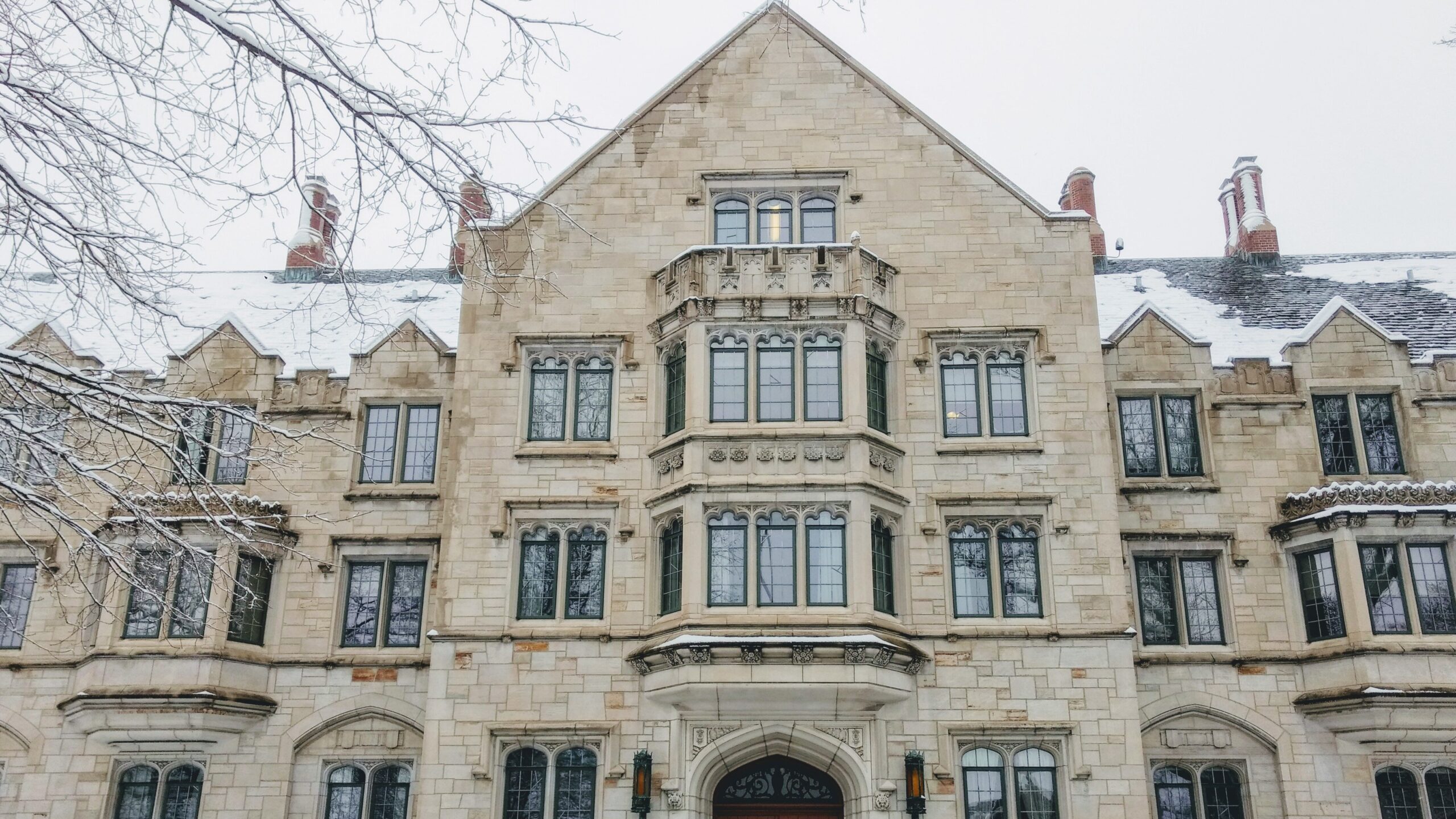
Shared Living Spaces
- In 2012, there were over 20 million students enrolled in colleges or universities in the United States. Many of these students live in dormitories or shared apartments, making them vulnerable to security threats (Source).
- According to the data from Pew Research Center, about 79 million Americans live in shared living spaces. 31.9% of households have two occupants that aren’t related in any way or married (Source).
- Property crime is the most common type of crime reported on college and university campuses. According to the National Center for Education Statistics, in 2019, 98% of reported campus crimes were property ones (Source).
- According to recent studies, 70% of students consider crime to be increasing on campus. Moreover, female students were particularly afraid of robbery, sexual assault, and physical violence (Source)
- Sexual assault and harassment are prevalent on college and university campuses, with 13% of undergraduate women reporting experiencing some form of sexual assault or misconduct. One out of five college-aged female students who survived the assault receives psychological care (Source).
- The presence of alcohol and drugs in shared living spaces can increase the likelihood of security incidents. These incidents can include theft, assault, and other crimes. In a survey by the National Institute on Alcohol Abuse and Alcoholism, 1,825 college students between 18 and 24 die from alcohol-related unintentional injuries each year (Source).
- About 52% of students confessed to stealing certain items from their roommates, and only 82% “borrowed” them only to return them later. And this is a tempting thing to do, especially if the income difference between roommates is significant (Source)
- If we were to consider facts #82 and #83, it’s fair to say the turnover rate in shared living spaces, such as dormitories or apartments, is high can make it challenging to track who has access to the premises. Simply put, It means a constant influx of new people who may have access to the premises, increasing security risks (Source).
- ADT and Clery Center conducted a survey, which shed light on how students feel about campus security. As such, while on campus, 82% reported they felt concerned about their safety, with more than half stating that they were “very or extremely concerned.” Moreover, students don’t even feel safe during common activities, with 55% admitting they didn’t call their friends when feeling unsafe due to fear of being judged (Source).
- Many college and university dormitories have limited security measures, making them vulnerable to break-ins and other security threats. One of the most despicable examples includes the murder and assault of Jeanne Clery in the resident hall. The parents filed a lawsuit against Lehigh University to invest 1,000,000$ into security, and, thanks to their efforts, the Clery Act was established (Source).
In such a scenario, DoorJammer can help provide an added layer of security for students living in dormitories or shared apartments. Since theft is a common crime in these spaces, DoorJammer can be used to reinforce the doors, making them harder to break into. This can help deter potential burglars and prevent thefts of laptops, smartphones, and other electronic devices.
In addition, DoorJammer can also provide a sense of security against sexual assault and harassment. It can prevent unauthorized entry into dorm rooms or apartments, providing an extra barrier against potential perpetrators, giving the students peace of mind, and helping them feel safer in their shared living spaces.
Furthermore, DoorJammer can address the issue of trust between roommates. Adding an extra layer of security to the doors gives students more confidence that their valuables will be safe from theft by their roommates. In turn, it can help improve relationships between roommates and create a more harmonious living environment.

Hospitals Or Medical Facilities
- Hospitals and medical facilities are environments that can be highly stressful for patients and their families and staff members who may be dealing with emotionally-intense situations. Between 27-87.4% of medical personnel can experience stress while performing their duties (Source).
- 20,050 healthcare workers stated they suffered trauma due to non-fatal work incidents. This is closely related to the previous fact because they treat various patients, and the workload is high enough, creating excess tension (Source).
- A study by the National Institute for Occupational Safety and Health found that 21% of nurses and nursing assistants reported being physically assaulted in the workplace in 12 months. Additionally, 12% of emergency department nurses stated that they experienced physical violence, and 59% – verbal abuse (Source).
- According to a study on physical and verbal abuse, 70% of healthcare facilities reported experiencing at least one workplace violence incident in the past year. And considering there were 250 respondents, this proves that it takes place on a mass scale (Source).
- According to the International Association for Healthcare Security and Safety, theft of prescription drugs and medical equipment is a major issue in hospitals and medical facilities. Thieves can usually aim to steal medications and equipment such as painkillers, anesthetics, and insulin due to their value on the black market. In addition to the cost of the stolen items, such theft can seriously affect patient care and safety (Source).
- One of the most common security incidents reported by healthcare facilities was theft or loss of property. Theft is a significant issue in hospitals and medical facilities, and it can involve not just drugs and medical equipment but also the personal belongings of staff, patients, and visitors (Source).
- Medical facilities often have multiple entry points and public access areas, making monitoring and controlling who enters the premises challenging. And this rings especially true if we were to consider that, according to CDC, there were approximately 883 million visits to physician offices, hospital outpatient departments, and emergency departments in the US in 2016 (Source).
- Hospitals have strict regulations governing patient privacy and confidentiality, making it crucial to protect confidential information from unauthorized access or theft. Healthcare providers are responsible for safeguarding patient information; failure to do so can result in legal and financial penalties and reputational damage (Source).
- The Joint Commission, which accredits and certifies healthcare organizations in the US, requires hospitals to have a security management plan that addresses issues such as risk assessment, emergency management, and staff training. The Joint Commission’s standards are widely recognized in the healthcare industry and guide best practices for healthcare security management (Source).
- With all this in mind, investing in security measures such as security cameras, access control systems, and security personnel can improve the safety and security of hospitals and medical facilities, protecting staff, patients, and confidential information. While no security system is foolproof, having multiple layers of security can deter potential threats and provide early detection and response to security incidents (Source).
DoorJammer can play a key role here. It can secure storage areas and prevent unauthorized access to these valuable items when combined with access control systems and security personnel. Additionally, DoorJammer can reinforce doors in public access areas, such as waiting rooms or emergency departments, to prevent unauthorized access or intruders from entering these sensitive areas.
Closing Thoughts
With all the statistics out of the way, there’s only one fact left:
- At the end of the day, crime is highly predictable as both criminals and victims follow the same life patterns. However, what’s even more interesting, criminals prefer not to operate out of their comfort zone, thus, making it easier for law enforcement to catch them (Source).
However, even though you can predict some crimes, there’s no saying what the criminal wants: your laptop and other valuables or your life. And unfortunately, no single security measure is foolproof. The most complicated locks can be picked with the right tools, alarm and security systems can be tampered with, and even the most well-protected databases can be hacked and used to gain confidential information. But it doesn’t take away from the fact that we must feel secure to live our lives comfortably or make sure we have enough tools at our disposal to deter or, in the worst cases, delay criminals long enough to react.
On its lonesome or combined with other security measures, DoorJammer can provide peace of mind knowing that you have taken a proactive step towards protecting yourself and your family. Whether traveling, staying in a shared living space, or trying to make the school, your business, or your property secure, DoorJammer can help keep you safe from threats. It’s a compact tool perfectly fit to barricade the door in practically any scenario while also being sturdy in design and simple in use. With DoorJammer, you can take control of your security, knowing you are prepared for any situation.